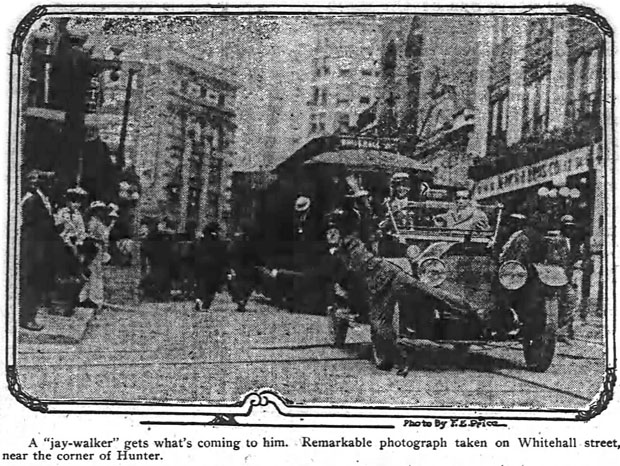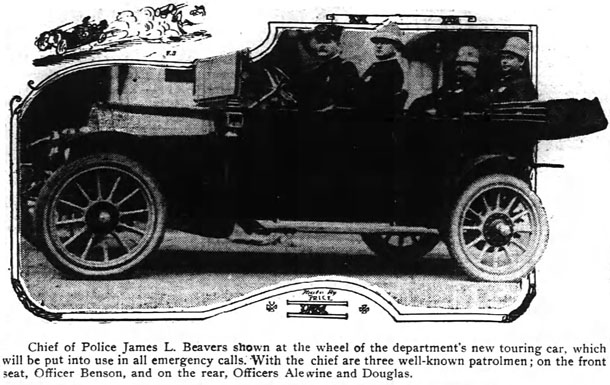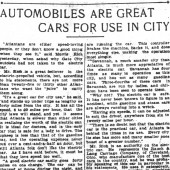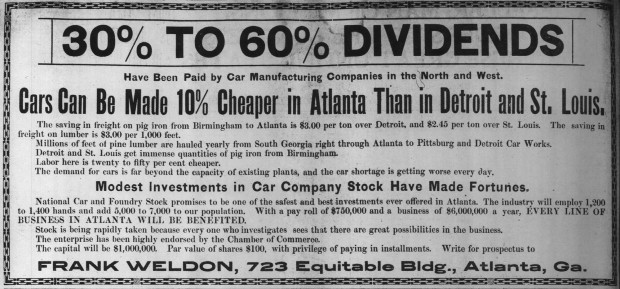The Constitution: Atlanta, GA – Thursday, June 23, 1904
The general council of Atlanta is to be congratulated on adopting an ordinance regulating the operation of automobiles on the streets of the city. The rapidly increasing local use of these machines, the number of more or less serious accidents of the last few months, and the fact that no municipal laws existed governing their operation, combine to make the passage of the ordinance very timely and advisable.
That portion of the ordinance which restricts speed of the “devil wagons†in and outside the fire limits is so framed as to be just, both to the automobilists and the public, generally. The speed of 8 miles an hour inside of the fire limits and 15 outside ought to satisfy the owners and chauffeurs, inasmuch as it should meet all of their demands, both of a business and pleasurable nature. It also places the maximum of speed at such a limit as will enable a swift stopping of the machine in the presence of danger or of an unforeseen emergency. The ordinance committee likewise displayed wisdom in decreeing that all operators of self-propelled machines shall be licensed. An automobile, however simple its construction, is very similar to a locomotive, and it is very certain that no railway would trust a novice with the operation of one of these complicated pieces of mechanism.
Similarly, the idea that an inexperienced person should be allowed to send one of these powerful machines flying through the streets, imperiling the lives of pedestrians and hampering other modes of traffic, is not to be entertained for a moment. The provisions of the ordinance in this respect are so lenient and sensible as to appeal to the most fanatical automobilist. They are easily complied with and they give the footgoing public a satisfactory guarantee of safety.



